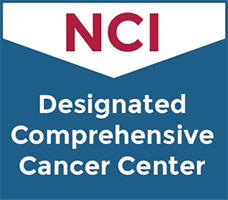Study provides new data on COVID outcomes for cancer patients
A new prospective clinical trial with updated data on COVID-19 hospitalizations and deaths among patients with cancer confirms the importance of vaccination and sheds light on which conditions put patients most at risk.
Patients who had been vaccinated had a 50% reduction in risk of hospitalization, according to data from the National Cancer Institute COVID-19 in Cancer Patients Study (NCCAPS) published July 17 in JAMA Oncology.
Death incidence was highest in patients with lymphoma, intermediate in patients with acute leukemia and lung cancer, and lowest in patients with other solid tumors or with blood cancers other than lymphoma. Patients who had undergone chemotherapy or who had a history of stroke, atrial fibrillation and pulmonary embolism were at higher risk for hospitalization.
The finding that patients with lymphoma had the highest risk of death suggests a potential detrimental effect of B-cell-depleting therapy on COVID-19 outcomes, the study stated, but the authors noted that this hypothesis was confounded by the inherent immunosuppression in patients with lymphoma.
“These results are important because they represent the only prospective clinical trial in patients with a recent diagnosis of COVID and an active cancer undergoing therapy,” said the study’s lead author Brian Rini, MD, Ingram Professor of Cancer Research and Thomas F. Frist Sr. Professor of Medicine.
Rini is one of two principal investigators of NCCAPS. The other is Lorissa Korde, MD, with NCI’s Cancer Therapy Evaluation Program, who is the study’s senior author. Patients were accrued for the study between 2020 and 2022, and the statistical analysis took place between September 2024 and April 2025.
The study involved 1,572 adult patients who had a COVID-19 diagnosis within 14 days while receiving active treatment for cancer or had a prior stem cell transplant or CAR-T cellular treatment therapy. In addition to outcomes, investigators analyzed COVID-19 therapies patients received and disruptions in cancer treatment. The most common type of disruption was a delayed cancer treatment.
The majority of patients had already been accrued for analysis before the Food and Drug Administration gave emergency use authorization for the antiviral treatment nirmatrelvir with ritonavir, which is most commonly known by its brand name, Paxlovid. Of the patients who enrolled in the study after the first COVID-19 vaccine received FDA emergency use authorization, 41.5% were fully vaccinated.
“These data provide a road map to protect the most vulnerable cancer populations not only from COVID, but from potential future pandemics,” Rini said.
Patients hospitalized for COVID-19 within 90 days of enrollment accounted for 18.4% of the study group. Among the hospitalized patients, 23.4% were admitted to an intensive care unit.
The study was funded in part by the Coronavirus Aid, Relief, and Economic Security (CARES) Act, and also by the National Cancer Institute National Clinical Trials Network, Experimental Therapeutics Clinical Trials Network, and Community Oncology Research Program grants via the U10 funding mechanism.
The post Study provides new data on COVID outcomes for cancer patients appeared first on VUMC News.






